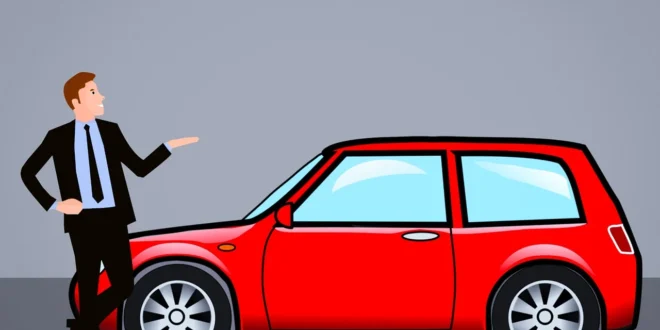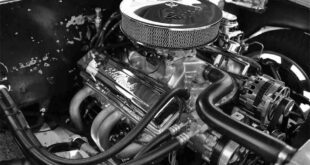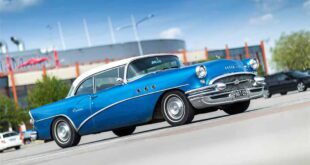What matters most for a first city car
A first car should be simple to drive, cheap to keep, and safe. City streets bring tight turns, slow traffic, and surprise stops. That means an easy gearbox, strong brakes, clear mirrors, and good visibility help every single day.
A smaller car is often better for parking and fuel bills. Still, it needs enough space for friends, sports gear, or weekly shopping. The best pick balances all of this without draining a savings plan.
Start by writing down what the car must do in a normal week. School or college runs, a weekend job, football training, and family trips all count. How many miles per week? Where will it be parked at night? Is there a steep street nearby? Answers to these questions point to the right size, engine power, and features.
Why an automatic makes city life easier
In stop-start traffic, an automatic removes the stress of constant gear changes and clutch control. The car handles the shifts. The driver keeps both hands on the wheel and focuses on gaps, bikes, and pedestrians. Hill starts are calmer, too. Most automatics creep forward gently when the brake is eased, which helps with parking and tight maneuvers.
If a local comparison helps, browsing Automatic Cars for Sale Liverpool can show real models, mileages, and prices in one place. Seeing actual listings makes it easier to judge what fits a budget and which features are common at each price.
Budgeting without surprises
Price is only the start. A smart plan covers the whole cost of owning the car. That includes:
- Insurance: Young drivers often pay more. Smaller engines and strong safety ratings can lower the price.
- Vehicle tax: Check the annual rate based on the car’s CO₂ band and registration year.
- Fuel: City driving uses more fuel because of idling and short trips. Look for honest, real-world economy figures.
- Maintenance: Regular servicing, tyres, and brake pads are normal costs. Older automatics may need transmission fluid changes on schedule.
A clean service history helps. Ask for invoices, not just a stamped book. In the UK, checking the MOT history online gives a quick view of past advisories. Repeated notes for tyres, brakes, or suspension hint at future bills. A car with fresh tyres and long MOT can be worth a little more because it saves money in the first year.
Understanding the main types of automatic
Not all automatics feel the same. The three common setups are:
Torque-converter automatic.
Smooth and strong at low speeds. Often the easiest to live with. Gear changes are gentle, which is great for traffic and parking.
CVT (continuously variable).
Keeps the engine in its best range for economy. The sound can rise and hold during hard acceleration. Many small city cars use CVTs and they work well for daily use.
Dual-clutch (DCT).
Shifts quickly and can feel sporty. Some are superb in traffic; older ones may be a bit jerky at very low speeds. A calm test drive tells the story.
Any of these can be a good pick. Focus on how the car behaves at 5–15 mph, during parking, and when joining a roundabout. If it hesitates or snatches, keep looking.
Safety features worth having
Safety tech is not just for new drivers; it helps everyone. Look for electronic stability control (ESC) and anti-lock brakes (ABS) as a base. City braking aid (often called AEB) can reduce low-speed bumps. Parking sensors or a camera save wheels and paint.
Bright LED headlights improve night driving. For family use, check for ISOFIX mounts on the back seats. If unsure, search the car’s Euro NCAP rating; a higher score supports lower risk and can help with insurance quotes.
Size, comfort, and real-life use
Small hatchbacks rule in busy areas because they turn sharply and fit into narrow bays. Still, comfort matters. Test seat height and steering reach. If the seat sits high, the view over the bonnet is clearer and kerbs are easier to judge.
Door size counts on tight streets—shorter front doors are easier in narrow spaces. Try the boot with real items: a school bag, a sports kit, or weekly groceries. If it barely fits, look for split-fold seats.
Cabin tech should help, not distract. A simple screen with Apple CarPlay or Android Auto keeps maps and music tidy. A clear reversing camera is better than a giant, complicated display with too many sub-menus.
A calm, simple viewing checklist
A neat, slow check saves stress later. When viewing a car:
- Walk around the body in good daylight. Panels should line up. Gaps should look even.
- Check tyres for even wear. Uneven edges hint at alignment or suspension issues.
- Start from cold. The engine should settle quickly and idle smoothly.
- Select Drive and Reverse a few times with the brake held. Shifts should feel clean, without a thud or long pause.
- On the road, listen for knocks over speed bumps. The gearbox should change up and down without a flare in revs or a shudder.
- After the drive, check for fluid drips under the car.
Smell the cabin. Damp or a strong air-freshener can hide issues. Make sure all windows, mirrors, and the central locking work. Test every button: wipers, lights, and hazard switch. Slow windows and weak air-con suggest poor care.
Paperwork that protects the buyer
Proper documents protect time and money. The V5C logbook must match the registration and the seller’s ID. The VIN on the car should match the VIN on the V5C and the windscreen plate. A paid history check can flag finance, theft, or a write-off record. Keep a copy of the receipt with the car’s details, the price, the date, and the seller’s name and address.
Before driving away on public roads, road tax must be set up online and insurance must be active. Do not rely on any old “tax disc” ideas; those days are gone. If the car needs an MOT within the next month, plan a service visit early to avoid a rush.
Fuel use and day-to-day costs
Older manuals often beat older automatics on fuel. Modern automatics have closed the gap. Many match or beat the manual version in real traffic because they shift at the right time and skip wasteful revs. Tyre pressure makes a big difference.
Check it monthly. Carry less junk in the boot. Short trips keep the engine cold and use more fuel; every now and then, a longer run helps the system warm up and clear out moisture.
Transmission care is simple. Follow the maker’s schedule. If the timetable says the gearbox fluid is “lifetime,” still ask a trusted garage for advice once the car is older; fresh fluid can improve smoothness on some models. Keep records of every service and repair. A tidy folder helps when selling the car later.
Smart features that actually help
A few features bring real value in cities. Adaptive cruise control is useful on long dual carriageways but less helpful at 20–30 mph. In town, lane-keep assist can be more annoying than useful unless it’s set to a gentle mode.
Parking sensors, a camera, and heated mirrors earn their keep all winter. Auto-hold (sometimes called brake hold) is great in traffic: press the brake once, and the car stays still until the accelerator is pressed again.
For teen drivers, a speed warning or limiter can prevent drift above the limit. A simple black box (telematics) policy may drop insurance costs if driven smoothly. Smooth acceleration and early braking help safety, comfort, and fuel use at the same time.
When a manual still makes sense
Manuals can suit drivers who enjoy full control and very low purchase prices. In rural areas with long, steady roads, a manual may return strong economy. If most trips happen outside peak times and the driver enjoys shifting, a manual can be fine. Still, for dense traffic, tight parking, and frequent hill starts, an automatic tends to feel calmer and safer for a first car.
How to spot a fair price
Compare several cars of the same year, trim, engine size, and mileage. Note any extras that add value: service history, new tyres, recent brakes, or a fresh timing belt on the engine. Price should make sense in that context.
A car priced well below the group often hides problems; a car priced well above needs strong reasons. Ask for a full invoice that lists any warranty period, what it covers, and where repairs are handled.
Taking the final step with confidence
On the handover day, bring a short checklist: both keys, V5C, handbook, recent service invoice, spare tyre or tyre kit, locking wheel nut, and the radio or sat-nav code if needed. Confirm the MOT date and keep a photo of the mileage at pickup.
Set up insurance and tax before leaving the site. Pair the phone. Save home and school addresses in the sat-nav. Adjust the mirrors and seat properly. A safe, calm first drive starts with unhurried setup.
Key takeaways and next steps
An easy first car keeps city driving simple and safe. A small, tidy automatic with a clear history, strong safety kit, and fair running costs fits that goal. Test how the gearbox behaves at very low speeds. Make sure the seat and mirrors give a clear view. Check paperwork, set a full-life budget, and take time to compare prices with similar cars.
With a steady plan and a careful test drive, the right automatic will serve daily life without drama—quiet on school days, ready for weekend plans, and still a sound choice when it is time to sell or trade up.
 khamush.com Lifestyle | Motivation | Poems
khamush.com Lifestyle | Motivation | Poems



